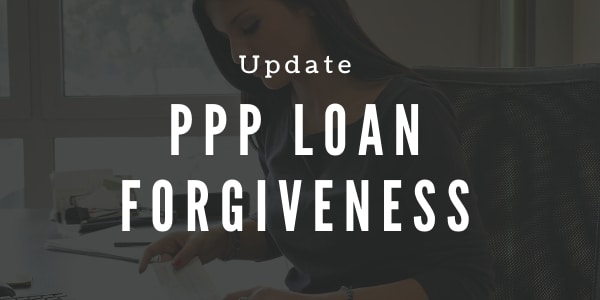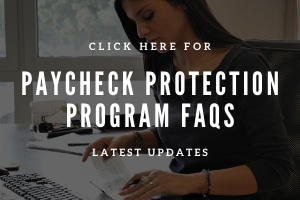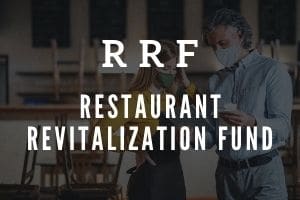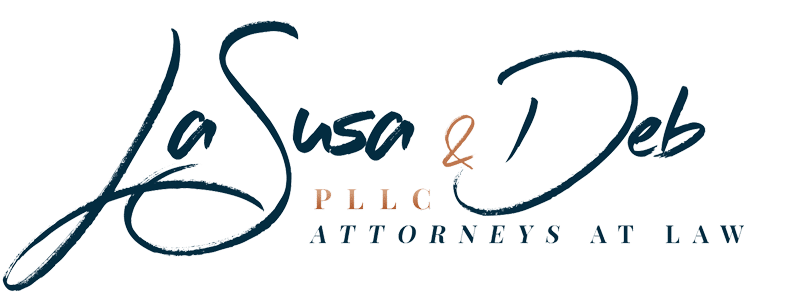
NOTE: The information below has been modified by the Payroll Protection Program Flexibility Act. For the most up to date information scroll down to real the most recent information under the “UPDATE” section below.
Once you receive your PPP loan proceeds, there are some steps you can take to help ensure loan forgiveness.
Carefully plan your implementation of the funds to ensure forgiveness. It is important to note that even with proper planning it still might not be eligible for forgiveness.
Here are 3 reasons your loan might not be forgiven:
- Your loan forgiveness will be reduced if you decrease your full-time employee headcount.
- Your loan forgiveness will also be reduced if you decrease salaries and wages by more than 25% for any employee that made less than $100,000 annualized in 2019.
- You have until June 30, 2020, to restore your full-time employment and salary levels or you may not have the loan forgiven.
Those are just a few of the main reasons that a loan will not be eligible for forgiveness. We will be updating forgiveness in the following months as we learn more. Unfortunately, one of the frustrating aspects of this program is that it is evolving and changing as it unfolds. We may not know all the criteria until lenders start processing applications for forgiveness.
Applications for loan forgiveness will be processed by your lender. Your lender is required by law to give you a response within sixty (60) days.
Here are the 8 steps you can take to assist the process. Work with your accountant on these steps or consider hiring an accountant or financial professional.
- Make A Plan To Maximize The Amount You Will Be Able To Forgive
- Determine The Eligible Costs Incurred & Paid During Next 8 Weeks (Remember that Withholding and FICA are not eligible for forgiveness)
- Calculate The Employee Floor For Forgiveness
- Determine Any Percentage Decrease In FTEs During 8 Weeks
- Calculate Reduction In Payroll > 25% of Prior Quarter
- Consider Changes For Employees “Restored By June 30th”
- Prepare The Final Package For Submission To The Bank For Forgiveness
- Answer All Questions For Lenders & The SBA
Here is a list of the basic core documents you will need to collect to provide with your PPP forgiveness application. Your lender may have additional requirements.
- Documents verifying the number of full-time equivalent employees on payroll and their pay rates, for the periods used to verify you met the staffing and pay requirements:
- Payroll reports from your payroll provider
- Payroll tax filings (Form 941)
- Income, payroll, and unemployment insurance filings from your state
- Documents verifying any retirement and health insurance contributions
- Note: payroll processors should take out FICA and withholding, which isn’t a forgivable use of loan proceeds.
- Documents verifying your eligible interest, rent, and utility payments (canceled checks, payment receipts, account statements)
If you’re a sole proprietor, you can have eight weeks of the loan forgiven as a replacement for lost profit. But you’ll need to provide documentation for the remaining two weeks of cash flow, proving you spent it on mortgage interest, rent, lease, and utility payments.
Good recordkeeping and bookkeeping will be critical for getting your loan forgiven—you’ll need to keep track of eligible expenses and their accompanying documentation over the eight weeks. Your lender will likely require these documents in digital format, so take the time to scan any paper documents and keep backups of your digital records. We advise considering depositing your PPP loan proceeds into a separate account and using that account for expenses that will be covered by the PPP loan. This will make tracking of the funds easier. But before deciding to do this make sure your payroll processor has access to the funds.
Note: payroll processors will take out FICA and withholding, which isn’t a forgivable use of loan proceeds.
UPDATE:
What happens if I’m not approved for PPP Loan Forgiveness?
Your lender may allow you to provide additional documentation so they can reevaluate your request. Otherwise, your outstanding balance will continue to accrue interest for the remainder of the 2-year period.
As far as we know there is currently no prepayment penalty. You can pay off the outstanding balance at any time with no additional fees.
FAQs
1) Can I get PPP expenses forgiven and deduct them from my taxes?
No. Under the current guidance, any expenses that you claim for forgiveness under the PPP cannot then be deducted from your expenses. A forgivable PPP loan is already tax-free. The IRS does not want someone to receive free money from the same source twice.
2) Can I prepay my rent or mortgage?
Prepayment is not an allowed use of the PPP and is not eligible for forgiveness.
3) What counts as mortgage interest?
Any interest paid on a mortgage on a property used for business purposes is an eligible expense that the PPP can be used for and may qualify for forgiveness.
Examples include:
- Mortgage interest on a warehouse you own to store business equipment
- Auto loan interest on a car you own to make business deliveries
4) How are eight weeks of net profit from 2019 calculated?
Your net profit that was reported on your Form 1040 Schedule C is multiplied by 8/52.
Get Updates on The CARES Act
For business owners and nonprofits, stay updated with information relating to The CARES Act and SBA Disaster Relief Loans.
Subscribe for Updates




